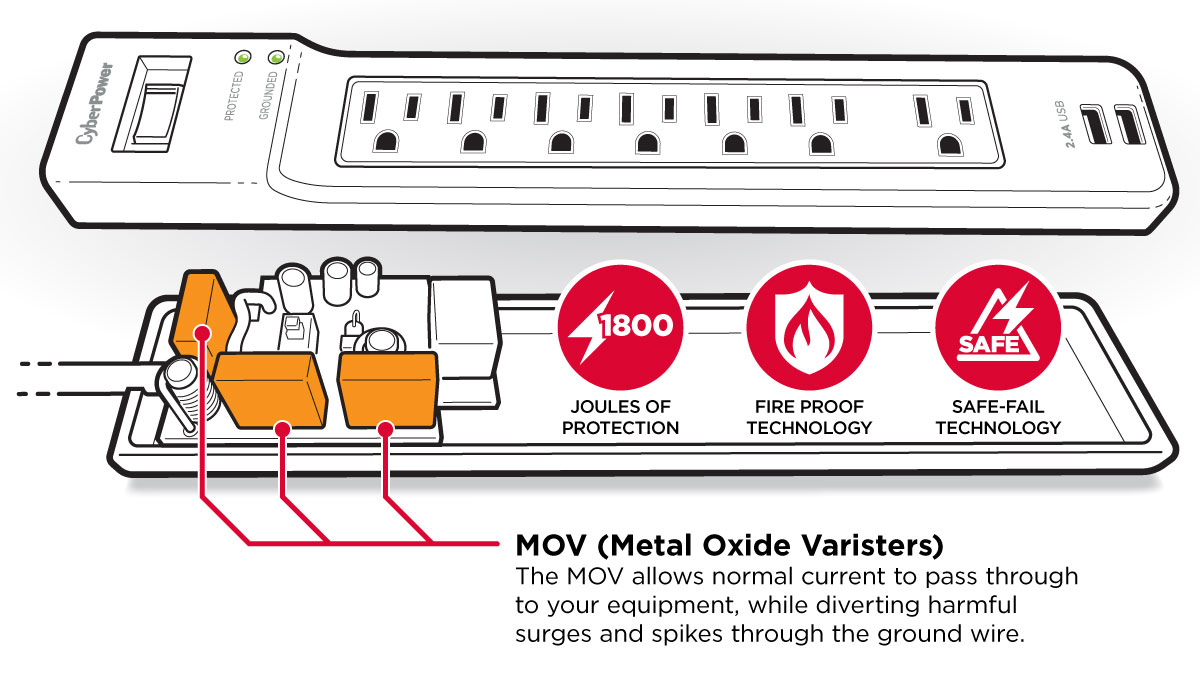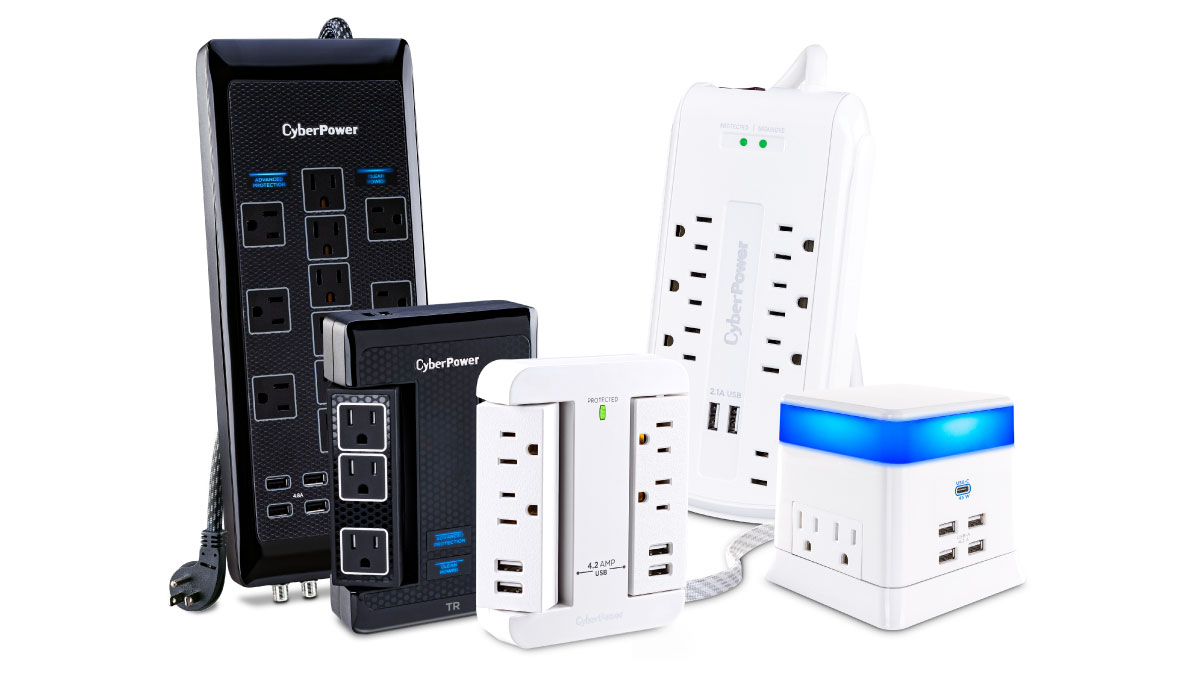
Your electronics are at risk from more than lightning.
No matter where you live, your home experiences power surges. Power surges or spikes can damage your valuable electronics like TVs and computers, as well as your smaller and more sensitive devices like smartphones and tablets. Power surges vary in duration and magnitude and can even cause a fire.
To fully understand the risk, let’s review the 3 Ps of surge protection.
P1: Power events are a common occurrence
We’re all aware of lightning and how a strike can travel along cable TV, telephone lines, or electrical service lines into your home. Spikes can also occur from utility power. But the most common electrical surges come from the sudden increases in power when large appliances are turned on. In fact, NEMA (National Electrical Manufacturers Association) estimates that 60 to 80 percent of power surges in your home are created when large appliances turn on and off. Refrigerators and air conditioners are the most common, but smaller devices like hair dryers and power tools can also cause a power surge.
These sudden and brief demands for power may occur a dozen times a day. They upset the steady voltage flow in the electrical system and cause surges. These smaller, repeated power surges may slowly damage your electronics. Repetitive surges can cause devices to malfunction, resulting in permanent damage.
Unlike high-level surges, low-level power surges won’t blow fuses or trip circuit breakers, but they can cause gradual degrading of internal circuitry until it ultimately fails. But with no visible signs, most homeowners are unaware of the damage until it’s too late.
P2: Protection is paramount
The best way to protect your devices against power surges is with a surge protector. The first thing to understand is that a power strip is not a surge protector. A power strip simply contains extra power outlets to plug in your devices.
Some surge protectors look like power strips, but a surge protector detects and diverts excess voltage to the ground wire before a surge can reach and harm your electronics. It does this with what is known as a MOV or metal oxide varistor. As shown below, the MOV allows normal current to pass through to your equipment, while diverting any harmful surges/spikes through the ground wire.

Remember any electrical device containing a microprocessor needs protection as even a 10-volt fluctuation1 can disrupt proper operation. Microprocessors are found in most home electronics including TVs, phones, computers, refrigerators, and microwave ovens.
P3: Purchase the right surge protection to meet your needs.
Now that you know why you need to protect your electronics, you need to understand the key factors to consider when buying a surge protector.
| 1. Number of outlets. Determine what household items you wish to protect. Better to err on the safe side and protect anything important. If the items are close together, you can buy a surge protector with multiple outlets so everything can be plugged in and protected by one unit. Buying a surge protector with a few more outlets than you need right now will allow for more items to be added later. If it’s just one or two devices, you can get a wall tap surge protector that plugs directly into an outlet. | |
| 2. Joule rating. Energy absorption is measured in joules. So, the more joules the better. The joule rating indicates the maximum amount of energy that can be absorbed by the surge protector. Joules can be consumed by power surges and will decrease over time. Which means surge protectors gradually lose their joule protection and eventually need to be replaced. | |
| 3. Clamping voltage. This is the amount of voltage which triggers the surge protector to redirect excess electricity into the ground wire. So, a lower number is better for clamping voltage. To protect valuable electronics, look for a lower clamping voltage. |
Other features to consider
- USB chargers: Surge protectors with USB charging ports offer you another option to charge your smart phones, tablets and laptops. Some offer more amps for faster charging.
- Fireproof: Some surge protectors offer fireproof technology, so you can enjoy additional peace of mind knowing your home is protected with the best technology. It’s rare for a surge protector to experience a thermal event, but with fire-proof technology, you eliminate any worries of additional damage occurring beyond the surge protector.
- Safe-Fail Protection: Power is cut to connected equipment when the surge protector can no longer provide surge protection, keeping your electronics safe.
- Wide Spaced Outlets: Large “transformer” type plugs can block access to other power outlets. If you have oversized plugs, you should consider buying a surge protector with widely spaced outlets, so they won’t overlap and impede access to the other outlets.
- Low-Profile Right-Angle Plug: This type of plug is great for tight plug-in locations such as behind a desk. A low-profile right-angle plug with a 45-degree offset ensures both wall outlets are available for use.
- Energy-saving ECO features: Automatically shuts off power to attached devices when not in use. For example, even when your TV is shut off, it’s using power known as “standby” or “vampire” power. Vampire power can account for up to 20% of your electrical bill.2
Protect your devices and data from power events with a surge protector. Check out the selection of CyberPower surge protectors, with a variety of options designed to fit your power needs.

View all our Surge Protector Products here: https://www.cyberpowersystems.com/products/surge/
CyberPower is your ultimate ally in power and the leading manufacturer of surge protectors. Check out one of our complete line of surge products at CyberPowerSystems.com.
Sources:
1. Alliant Energy Power surges cause & effect
2. Payless Power Complete guide to vampire power


